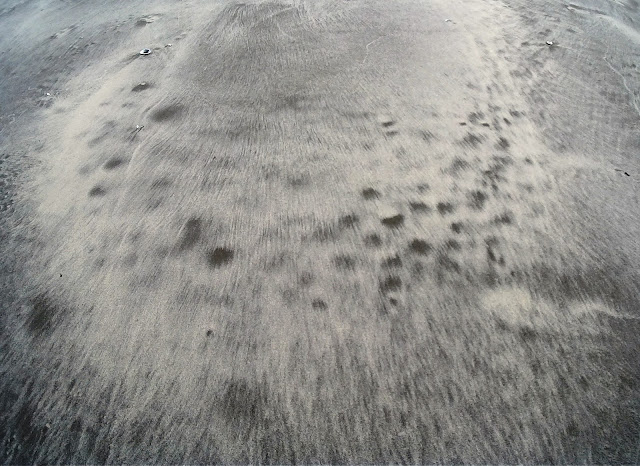Our initial impressions of Whakatane itself were not hugely
favourable. The weather was cold and somewhat grey; the tide was out, revealing
the river mud flats in all their smelly glory; and the town seemed almost
deserted.
And we couldn’t see the ocean. The Whakatane river winds
down through salt marshes and dunes to a narrow harbour entrance, the town
huddling beneath a huge rocky outcrop covered in Pohutukawa trees.
 |
| Whakatane river |
So, eschewing the free parking near the river, we drove over
the hill to Ōhope, home to New Zealand’s most popular beach.
 |
| Ohope |
 |
| Ohope beach |
Still, we decided to persevere with Whakatane. This was the
first medium-sized town (approximately 19,000 people) we had spent any time in
and we wanted to experience ‘normal’ life in NZ. Bright sunshine gave us an early
morning walk along Ōhope Beach, followed by a cycle ride all the way down to
the point, overlooking a calm, natural harbour. Buying ‘reed’ avocadoes from ‘hedge
veg’ along the way was a bonus. These round, cannonball-shaped avos are far
more delicious than the usual supermarket fare.
We drove back over the hill and explored the town. In winter
it does indeed seem deserted: it comes alive in summer when the area floods
with visitors. Ōhope has earned its reputation as favourite beach because it
is, unlike many beaches in NZ, completely safe. No fear of rip tides or
dangerous currents.
People in the shops and cafes were really friendly, too. The
excellent museum brought the history of the town alive: Whakatane is steeped in
1000 years of Maori folklore. In the supermarket, we recognised and chatted to
the trumpet player from church. Yes, we were getting a feel for a small place.
Initially not sure of our camping spot (we were, after all,
in a car park) we returned to it for a second night. Because, actually, even
though we were in a car park and not in a remote camp site, it was still a
really, really pretty spot.
So, walk before breakfast again the next morning: this time,
round Kohi point, climbing up and down hundreds of steps, to Ōtarawairere: a
secluded bay overlooked by more Pohutukawa
with a beach of shell fragments and even more driftwood.
 |
| Otarawairere |
 |
| A beach of shells, shell fragments, shell sand particles... |
On the way back, a dolphin cruised past, less than a hundred metres from the beach.
Coming down, we met a lady who had moved here from Christchurch, escaping the earthquakes. She told us of how lucky she and her husband were that they had ended up in Whakatane: getting used to a small town, but near enough to the bigger cities of Rotorua and Tauranga, and safe. We gently picked her brains on NZ’s health service (she was a social worker/counsellor); life in Whakatane – quite international, partly because of the paper mills which are large employers; and how it had been for them to move. And, of course, we heard a lot about South Island – the ‘better of the two’.










No comments:
Post a Comment